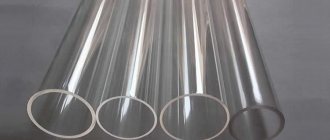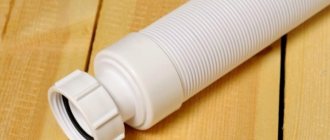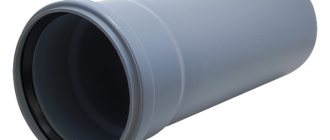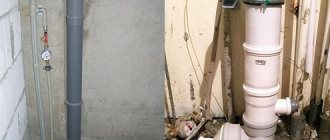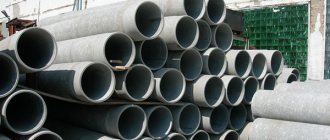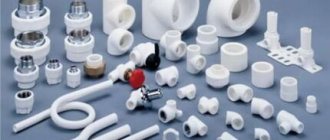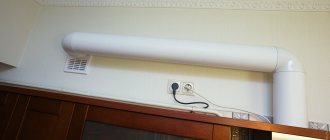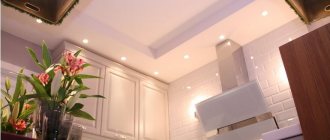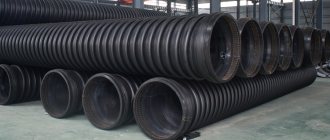Any housewife who loves to cook wants to have good ventilation in the kitchen. To do this, you need to buy the hood you like and install it. Installation involves connecting individual elements into a single network. To remove air, you need to select the pipes for the kitchen hood in advance and combine them together.
Types of exhaust pipes
Differences between a kitchen exhaust system and ventilation
Many people do not know how hoods differ from standard ventilation in homes. When constructing residential buildings, workers lay special channels inside the walls. They are designed to provide air exchange. Their additional task is to remove exhaust air from residential premises to the roof. However, standard ventilation does not always work 100%.
A hood is a kind of adapter for an air duct that operates in forced mode. By operating the fan, it sucks exhaust air from the apartment.
What does exhaust ventilation consist of?
A kitchen hood with an air duct is a complex system that consists of several elements interconnected:
- Air intake grille. Can be square, rectangular or round. A special mesh can be attached to the grilles, which stops large debris and dust.
- Pipes or ducts. Connecting components of the entire system. Air mass flows through them. Can be round or square.
- Air valve. It is installed behind the air intake grille. Designed to shut off pipes while the hood is turned off.
- Silencer - an element to reduce the noise level of the fan.
- The fan is the basis of exhaust ventilation.
Don't forget about the control panel. It allows you not only to turn the device on or off, but also to set power levels. On modern models, a separate button is installed to illuminate the work area, and the buttons are replaced with sensors.
Types of kitchen designs
Air ducts for kitchen hoods are divided according to various factors. By design, there are two large groups of products:
- Flexible. The advantage of such structures is the ability to change their position, compress or stretch if necessary.
- Tough. Easy to assemble. Expensive, but the price is determined by the effectiveness.
Division by section shape:
- Flat. Their main advantage is invisibility.
- Round. Popular in factories. Installed in rooms with high ceilings. Due to the fact that in apartments of panel houses the air ducts in most cases are square, it is necessary to use special adapters.
- Square, rectangular. The most popular designs. It is convenient to place such a pipe at the junction of two plates. In most cases, the appearance is acceptable for any apartment.
Based on the material, aluminum and plastic products are distinguished.
Advantages of aluminum products:
- Easy to install.
- Unpretentiousness and reliability of the material.
- The products can withstand prolonged exposure to critical temperatures.
- Low cost.
Disadvantages of aluminum:
- The type of metal is not suitable for all types of finishing materials.
- Accumulation of condensation in the room due to the high thermal conductivity of the material.
Advantages of plastic:
- Rust-resistant material.
- Light weight.
- Low price.
- Easy installation of a complete system.
Disadvantages of plastic:
- The material is resistant to prolonged exposure to high temperatures.
- Additional adapters are required for installation.
Corrugated pipe for exhaust
Metal chimneys - advantages and disadvantages
In private housing construction, 3 types of such gas ducts are used:
- ordinary pipes made of ferrous metal and galvanized;
- the same - made of stainless steel;
- modular systems of double-walled sandwich chimneys.
The first 2 options are used in outbuildings - greenhouses, sheds, garages. Connect to wood stoves and other heat sources that operate periodically. The advantages of single-wall pipes are affordable price and ease of installation.
Black iron pipes can be used in various cabins and sheds, taking fire precautions
There are many more disadvantages:
- galvanized and “black” chimneys burn out quite quickly and are a fire hazard;
- when connecting to a gas water heater or boiler, a lot of condensate is formed - the outer section of the pipe must be insulated;
- for the same reason, the channel becomes clogged with soot when the chimney is operated with a TT boiler;
- the metal is subject to corrosion.
For these reasons, single-walled steel flue ducts cannot be used in residential buildings. Stainless steel systems are used in Russian baths, but with mandatory compliance with building codes regarding fire safety.
Smoke metal sandwich pipes consist of 3 layers:
- internal channel made of stainless steel 0.5-0.6 mm thick;
- thermal insulation “jacket” - stone or kaolin wool 25...60 mm;
- outer shell made of stainless or galvanized steel 0.5 mm.
Reference. Basalt filler can withstand heating up to 600 degrees, then it begins to collapse (crumbles). Fire-resistant mullite-silica (kaolin) fiber is rated for temperatures up to 800 °C, but is rarely used by manufacturers.
The main difference between sandwiches and classic stone chimneys is the ability to deviate from the vertical and bypass obstacles with the pipe (roof overhang, elements of the rafter system). Other positive points:
- Reasonable cost and light weight of products.
- Speed of installation - if properly prepared, the external structure can be assembled in 1 day without the involvement of specialists.
- Minimal roughness of internal stainless walls.
- A wide selection of shaped parts - adapters, 90 and 45 degree elbows, ready-made tees with an 89° outlet (1° is the slope of the horizontal section towards the boiler).
- The systems are suitable for all types of boiler equipment.
- Nice appearance.
The lining of sandwich pipes retains its characteristic shine only when it is made of stainless steel. A galvanized casing becomes cloudy after 1-2 years, and metal with a poor-quality coating has time to rust.
The outer shell, made of cheap galvanized steel, quickly deteriorates
Now let’s reveal the problematic aspects of sandwich chimneys:
- iron gradually wears out and burns out, the life of the pipe is limited;
- the gas duct hidden behind the interior decoration cannot be controlled and signs of burnout can be detected in a timely manner; there is a danger of ignition and fire;
- Because the sandwich is relatively easy to make, the market is flooded with low-quality products;
- The pipeline can withstand heating up to a temperature of 1000 °C once and for a short time; after an emergency event, the structure must be disassembled and replaced.
Why you need to throw away a steel sandwich after burning soot. At temperatures of 900 degrees or more, the structure of the metal, including stainless steel, changes irreversibly, and the strength of the material decreases. The second nuance: when heated, the steel expands greatly, the inner pipe lengthens and deforms, and the longitudinal factory seam loses its tightness.
Ventilation pipe outlet methods
Before installing a pipe for a kitchen hood, you need to choose the design of the system and the output method. There are three installation options.
Two exits
If there are two openings for air exhaust in the room, the pipe from the kitchen hood should be connected to any of them. In this case, the second one does not need to be connected to anything. It will provide natural ventilation in the room.
To avoid back draft, which will lead to unpleasant odors back into the room, you can use two options:
- Open the window slightly.
- Install a special valve on the pipe without connecting an exhaust device.
The second option is more convenient, since when the hood is operating, the pipe will be blocked without connection. This will help prevent unpleasant odors from entering the room.
One way out
Most often, apartments have one ventilation hole installed. In this case, you cannot completely block its outlet pipe from the hood. This will disrupt natural air circulation. In order not to block the hole, it is necessary to install a special adapter for the air duct and an additional backdraft valve.
Exiting the pipe to the street
One of the effective options for installing an air duct in the kitchen is to lead the exhaust pipe to the street. Thanks to this, it is possible not to block the opening for natural ventilation. To do this you need:
- make a hole in the wall that goes outside the house;
- lay pipes to it;
- bring the segment out;
- install a rain cap;
- Cover the hole along the contour with mastic or cement mortar.
Outdoor pipe installation
Connecting a kitchen hood to electricity
Even a beginner can handle the job, but there are still some nuances in this matter. In some cases, the hood cord does not reach the nearest outlet. The main options for solving the problem are to use a carrier, extend the cable, or move the socket to a new location.
It is not advisable to use a long cord, but even if this option is chosen, the cable must be secured to the surface of the walls and the plug must be connected to the nearest outlet. The most popular way out of the situation is to install an outlet. It is advisable to disguise this element under the kitchen set.
Installation principles
Any person without practical experience can do the installation of an air duct for a kitchen hood with their own hands. To do this, just read the assembly instructions on the Internet or watch a training video. Professionals offer some tips for installing ductwork:
- Do not make the ventilation duct too long. This way you can increase efficiency.
- Make as few bends as possible on rigid plastic structures.
- The angles of inclination in the connections should not be less than 90 degrees.
- Check the tightness of the connections of individual elements during assembly.
- Don’t forget to attach the adapter to the outlet hole in the wall so as not to interrupt the natural air circulation process.
Additionally, care must be taken to camouflage the structure. To do this, you can make a cabinet, buy a plastic box, or create an unusual design on it to make the pipes complement the decor. Two more popular options for masking the ventilation system are creating a frame made of plasterboard or a suspended ceiling.
Exhaust ducts in the kitchen are an essential element of a forced ventilation system. When choosing them, you need to pay attention to the diameter, the material from which they are made, length, and shape. Installation will not be difficult if you take into account advice from professionals and familiarize yourself with the installation in theory.
Plastic box
You can effectively hide the pipe using a plastic box. Such options exist in various designs and have a wide selection of shapes, colors and decor. Some models may even be equipped with built-in lighting. But the option with a plastic box is suitable only if the air duct opening is located in close proximity to the hood.
